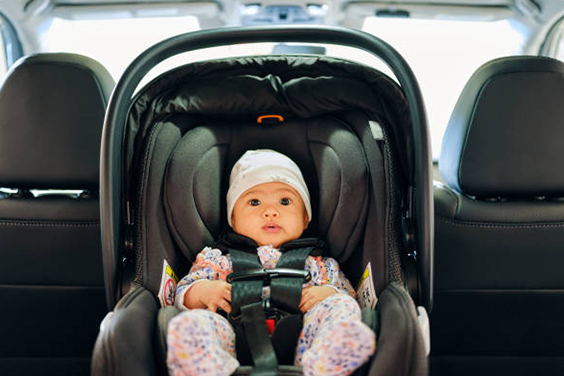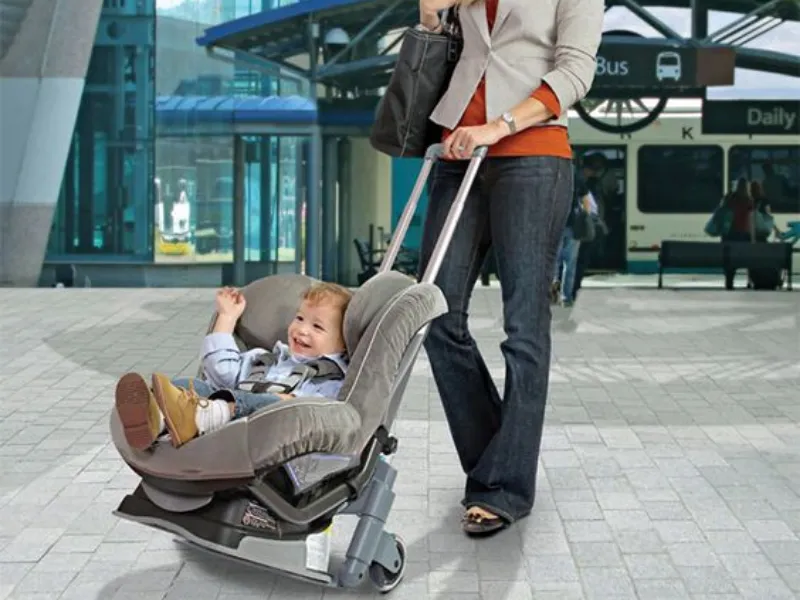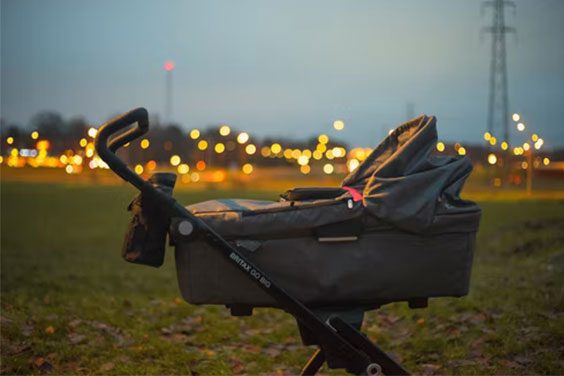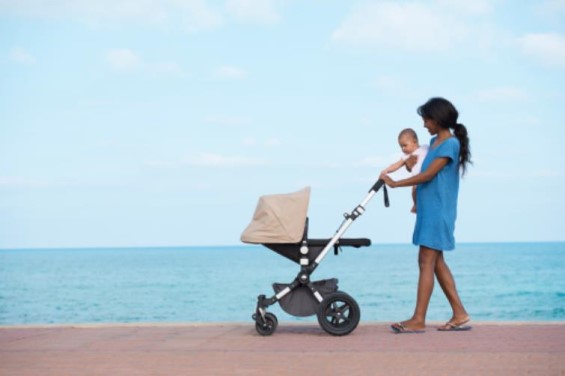Introduction to the 2-Hour Car Seat Rule
Hey there, fellow road-trippers and parents! You’ve probably heard about the 2-hour car seat rule through the grapevine or maybe during one of those never-ending pediatrician appointments. It’s like this unwritten rule of parenting – don’t keep your little bundle of joy strapped in a car seat for more than two hours in a day. Sounds pretty straightforward, right? But here’s the why behind it.
So, why the big fuss about two hours? It’s not just some random number someone pulled out of a hat. It’s about keeping your baby both safe and healthy. Car seats are lifesavers, no doubt about that. But here’s the catch – they’re not designed for long-term lounging. Think about it.
Your little one can’t move much in there, and staying in one position for too long isn’t great for their tiny bodies. This is especially true for preemies or babies with certain health conditions. The docs over at the American Academy of Pediatrics (AAP) aren’t just being overprotective. They’ve got some solid reasons, like the risk of oxygen levels dropping or messing up the baby’s posture.
So, why should you, as a parent, keep this rule on your radar? It’s simple – it’s all about balancing safety and health, especially in those early, delicate months of your baby’s life. We’re not saying you need to clock watch every time you strap in your kiddo, but just be mindful of the time.
It’s a small step that goes a long way in ensuring your little one’s well-being on the road. Stay tuned as we dive deeper into when this rule can take a backseat as your child grows.
Navigating the 2-Hour Car Seat Rule: A Parent’s Guide
Ever stopped to wonder why there’s so much talk about the 2-hour car seat rule? Let’s dive into what this rule really means for you and your mini-me.
The Backstory:Why Two Hours?
Some sharp minds in pediatrics and car seat design started noticing that babies, all cooped up in car seats, weren’t having the best time. Picture this: being stuck in the same spot for hours. Not fun, right? The American Academy of Pediatrics (AAP) and groups like the Lullaby Trust caught on quick. They said, “Hold up, we need a change here.” The idea was to take breaks during long rides, let those tiny legs stretch, and give those little lungs some room to breathe.
But What Exactly Counts as ‘2 Hours’?
Here’s the kicker: It’s not just about the time in the car. The clock ticks the minute your bundle of joy snuggles into any travel system with a car seat attachment, even strollers. So, it’s not just drive time; it’s about the total time in that curled-up position.
The Risks: More Than Just Discomfort
We’re not just talking about a bit of fussing here. Being scrunched up like that can really mess with their breathing and isn’t great for those developing bones and muscles. It’s about keeping these tiny, delicate bodies safe and sound.
Handling the Exceptions: Life Happens
Now, we get it, life throws curveballs. Sometimes, long trips can’t be avoided. In these cases, the game plan changes a bit. Plan those breaks – get your baby out of the car seat, let them stretch, feed them, and change their position. This is crucial not only during car rides but also when you’ve got them in car seat-compatible strollers or buggies.
Safety and Smiles All the Way So, remember, it’s not just about cruising from A to B. It’s about ensuring your little one is as chirpy and healthy at the end of the journey as they were at the start. Stick to the 2-hour rule – it’s a game-changer for your baby’s health and happiness.
Medical Reasons Behind the Rule
When considering the safety of young babies in car seats, it’s crucial to think about their respiratory health. Newborns, and particularly premature babies, may have trouble keeping their airway clear in an upright position or when scrunched up. Spending too long in a car seat might lead to a drop in blood oxygen levels, a fact underscored by safety experts.
Talking about musculoskeletal growth, it’s a big deal for our little ones. The way a baby sits in car safety seats can put odd pressure on their growing spine and hips. By sticking to the 2-hour time period rule, we’re making sure infants don’t stay in one position for too prolonged a period of time. This practice is key for fostering sound musculoskeletal health.
Now, let’s break this down a bit. When you’re on a long road trip, it’s wise to plan for frequent breaks. This isn’t just a good idea for the driver; it’s vital for your baby’s well-being.
Each stop is a chance to take your baby out of the car seat, maybe change a diaper, or just give them a bit of a cuddle. If you’re thinking, “But what about when we’re driving?” Well, that’s where a second adult comes in handy. They can keep an eye on the baby’s ability to maintain a safe position.
The American Academy of Pediatrics has tons of info on this. They recommend a ‘car seat test’ for premature babies, ensuring these little ones can handle the seat belt and car seat straps without any issues in heart rate or breathing. And, if you’re worried about spills or accidents, a waterproof mattress in the cot or crib can be a lifesaver.
Remember, infant sleep in a car seat isn’t the same as in a crib. The crib is the safest place for a nap, free from risks like suffocation or strangulation. Car seats are for travel, and while they’re crucial for protecting kids in motor vehicle accidents, they’re not meant for regular sleep.
And here’s a cool tip: there are apps developed by carer organizations and even the NHTSA that can help you keep track of time and offer advice on infant car safety. Always check the seat’s alignment and ensure it’s not vibrating excessively, as constant vibration can be an issue for tiny passengers.
Age-Specific Guidelines for Car Seat Use
Guidelines for Infants Under 1 Year
For your tiny tots, those under one year, sticking to the 2-hour rule isn’t just a good idea, it’s a must. Why? Well, their little bodies are still getting the hang of holding up their own heads and breathing easy. So, clock-watching here is more than just avoiding crankiness; it’s about keeping them safe and sound.
When to Flip to Forward-Facing
As your kiddo’s first birthday cake gets devoured, it’s tempting to flip that car seat to face front. But hold your horses! This isn’t just about candles on a cake. It’s about size, developmental milestones, and yes, age too. Docs usually say to chill until at least age 2, or when your mini-me outgrows the limits of their rear-facing throne.
Understanding Front-Facing vs. Rear-Facing Seats
Safety Differences
The face-off between front and rear-facing seats is more than just a style choice. Rear-facing seats are like the superhero cape for the younger ones, especially in a crash, safeguarding their head, neck, and spine. Flipping to front-facing? Make sure it matches your child’s age, weight, and height, and always align with safety guidelines.
Making the Big Seat Switch
Transitioning from rear to front-facing seats is a big-kid milestone. It’s not just about getting a new seat, but making sure it’s the right fit for your growing sprout. And remember, backseat is the best seat for anyone under 13.
| Weight Range of Child | Recommended Seating Options |
|---|---|
| Newborn up to 10 kg | Flatbed carrier, rear-facing infant seat, or convertible seat with safety harness |
| Up to 13 kg | Rear-facing infant-only seat or convertible seat with harness |
| Between 9 and 18 kg | Convertible seat facing either direction, with harness or impact shield |
| From 15 to 25 kg | Booster with back support or cushion, secured with seat belt or harness |
| 22 kg to 36 kg | Booster with back or cushion booster, using seat belt or harness |
The Transition Period After 1 Year
Changes in Guidelines Post-1 Year
Post-one year, things get a bit more flexible with car seat rules. But don’t hit the gas pedal just yet! This shift should be as gradual as your little one’s growth. Keep it comfy and safe for them.
Adapting to Your Child’s Development
As your kids sprout up, their car seat time can stretch out too. But hey, even on long drives, breaks are key. Older kids need booster seats or other age-appropriate car thrones, so keep up with the manual’s deets.
Long-Distance Travel with Infants
Planning and Managing Breaks
When embarking on long trips, planning is your best friend. Schedule breaks every two hours to take your baby out of the car seat. This is not just for stretching but also for feeding and diaper changes. The aim is to keep the journey enjoyable and safe for your little passenger.
Safety and Comfort Tips
Long trips can be challenging, but with the right approach, they can be manageable. Ensure your baby is in a car seat that fits their current size and is properly installed. Use sun shades to protect their delicate skin and eyes, and keep the car at a comfortable temperature. Soft music or a gentle lullaby can help soothe your baby during the journey.
Common Misconceptions About the 2-Hour Rule
You might’ve heard about the 2-hour rule and shrugged it off as just another overprotective guideline, but here’s the real deal: this rule isn’t just some random advice cooked up by overly cautious folks. Researchers didn’t just wake up one day and decide to make our road trips less fun. Nope, there’s solid science behind it, ensuring our little ones stay safe and healthy.
And here’s a kicker that catches many off guard: it’s not just about strapping your baby into a car seat for a drive to grandma’s. This rule stretches beyond the car – think strollers and buggies. Why? Because it’s all about the position they’re in, not just where they’re sitting.
When you’re hitting the road or even just taking a stroll, remember it’s not about ticking a clock. It’s about balancing the need to get from A to B with the fact that your tiny human’s well-being is in the mix. It’s about checking in, making sure they’re comfy and not just counting down minutes.
So, let’s squash that myth that the 2-hour rule is just another parental hoop to jump through. It’s not about making life harder; it’s about making sure our little ones can enjoy the journey just as much as the destination.
The Role of Car Seat Design in Safety
Features of Safe Car Seats
Modern car seats are designed with safety as the paramount feature. Look for seats with adjustable straps, adequate padding, and support. A good car seat should also be easy to install and fit snugly in your vehicle.
Choosing the Right Car Seat
Selecting the right car seat involves understanding your child’s current size and growth potential. Always adhere to weight and height guidelines provided by car seat manufacturers and choose a seat appropriate for your child’s age and development stage.
Beyond the 2-Hour Rule: General Car Seat Safety Tips
Ensuring Proper Installation
Proper installation is key to maximizing the safety of a car seat. Follow the manufacturer’s instructions carefully and consider having the installation checked by a certified car seat safety technician.
Regular Checks and Maintenance
Regularly inspect your car seat for any signs of wear and tear. Ensure the straps and buckles are functioning properly and that the seat has not been compromised in any way.
FAQs on the 2-Hour Car Seat Rule
Does the 2-hour rule apply to all types of car seats, including convertible seats?
Absolutely. Whether it’s a convertible or any other type, the 2-hour rule sticks. It’s all about how long your kiddo’s in there, not what they’re sitting in.
What should I do if my baby falls asleep in the car seat?
It happens, right? If your little one nods off in the seat, no biggie. Just make sure to move them to a flat, comfier spot once you’re not on the road anymore. Long zzz’s in a car seat? Not the best idea.
What are the risks of exceeding the 2-hour car seat limit?
Pushing past that 2-hour mark isn’t great. It can mess with their oxygen levels and put strain on their tiny spines and necks. It’s especially a big deal for the really little ones.
How often should I take breaks during a car journey with my infant?
Every couple of hours, pull over and take five. It’s as good for your baby as it is for you – a little leg stretch, some fresh air, a break from the road. It’s a win-win.
Conclusion: Prioritizing Safety as Your Child Grows
Parenting is a bit like navigating without a map. Sure, you’ve got some signs along the way – like the 2-hour car seat rule. It’s there for a good reason: keeping your tiny co-pilot safe on the road. But as they grow, these guidelines evolve. It’s all about adapting.
Here’s the thing: that journey of growing up? It’s never just about getting from A to B. It’s about ensuring that each ride, each phase of their growth, is as secure as it can be. That’s the core of it, really. The destination matters, but so does the ride – especially when it’s about their safety.
So, remember, the next time you buckle them up, it’s more than a routine. It’s a commitment – to their safety, to adapting as they grow, and to learning together. The 2-hour rule is just the beginning. There’s a whole road ahead. Have any baby products questions? Feel free to hit River Baby anytime!






